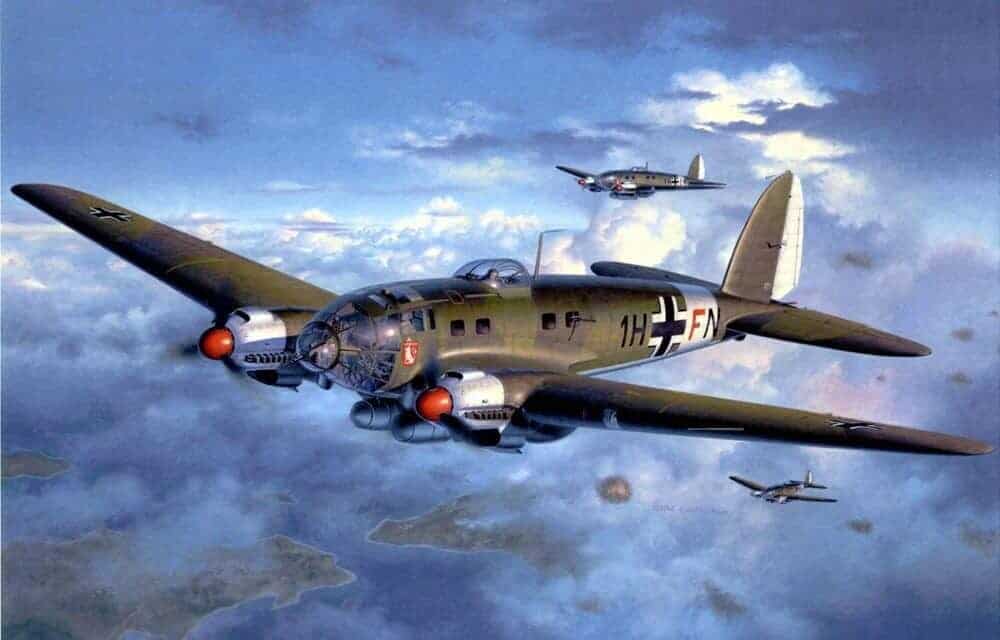Into the White is a 2012 adventure drama set during World War II’s Norwegian Campaign. It depicts the travails of the crews of a German Heinkel He 111 and a British Blackburn Skua after they shot each other down, crashed not far from each other, and were then forced to come together to survive the harsh elements. It is a pretty good flick, with a captivating tale of endurance, grace under stress, and common decency and humanity bridging the chasm and hatreds of war.
It was inspired by and based on true events, and although it took dramatic license to tinker with historical events in order to jazz up and dramatize them for viewers, the movie’s core event actually did happen. On April 27th, 1940, captain Richard Thomas Partridge of the British Royal Navy’s Fleet Air Arm shot down a German Heinkel He 111 bomber in Norway but was then forced to crash land nearby soon thereafter. Once on the ground, Partridge and his crewmate made contact with the downed German bomber’s surviving crewmen, and the enemies agreed to cooperate. British and German airmen then hung out together, helping each other out, until they were rounded up by a Norwegian ski patrol.

The Clash of Enemies in the Norwegian Campaign
Richard Thomas Partridge joined the British Royal Navy in 1929, and after a stint in the China Station serving aboard HMS Hermes, the world’s first purpose-built aircraft carrier, he decided that naval aviation was the thing for him. So he applied for naval pilot training, made it through the aviation curriculum, and received his wings in 1934. Partridge then spent the next few years serving in naval aviation squadrons aboard aircraft carriers, interspersed with brief stints aboard a cruiser and with the Royal Marines. He returned to the Fleet Air Arm in the summer of 1939, a few months before WWII started.
On April 9th, 1940, months of relative inactivity following Germany’s conquest of Poland, derisively known as the “Phony War” or sitzkrieg, came to an end when the Germans invaded Norway. The Germans sought to protect their access to Swedish iron ore, upon which their war industry depended and huge quantities of which were shipped to Germany through the Norwegian port of Narvik. Britain and France sought to disrupt that access, so they sent ground and naval expeditions to contest the matter with the Germans.
Partridge joined the Norwegian Campaign on April 24th, when he was made commanding officer of No. 800 Squadron, aboard the aircraft carrier HMS Ark Royal. His unit flew Blackburn Skua naval airplanes – low wing carrier-based two seater and single-engine aircraft, that combined the functions of dive bombers and fighters. Within 24 hours of taking command of the squadron, Ark Royal was positioned 120 miles off the Norwegian shore, and Partridge was in the thick of the fighting, leading his Skuas against the Germans in Norway.

On April 27th, Partridge, with a lieutenant R. S. Bostock in his plane as radio operator/ aerial gunner, led his men on a sweep north of the Norwegian capital, Oslo, and came upon a flight of German Heinkel He 111 bombers without fighter escort. Most of the bombers scattered upon sighting the British airplanes, but one of them, flown by a lieutenant Horst Schopis, doggedly flew on. Partridge led three Skuas in falling upon it, and they shot up the bomber’s port engine, forcing it down in a remote mountainous area miles away from anywhere.
Whatever glee Partridge and Bostock felt over their aerial victory, it did not last long. Shortly after downing the German bomber, Partridge discovered that his own airplane had sustained damage, probably the result of return fire from the Germans, and his engine started to act up. Before long, he lost all power as his engine quit on him altogether, and Partridge’s Skua was transformed into an overweight and unwieldy glider. With great difficulty and no small amount of skill, he managed to glide down to a bumpy landing on a frozen lake, not far from where the Heinkel had crashed. Partridge’s plane was totaled, but he and Bostock had survived the crash landing, and a few minor bumps and bruises aside, neither airman had sustained any serious injuries.

